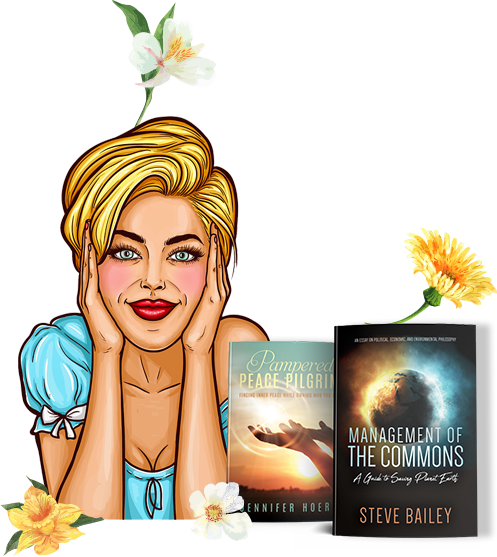
Writing a captivating short story is akin to wielding a brush on a blank canvas, each stroke of words forming intricate scenes that dance before the reader’s mind’s eye. It’s a craft honed through dedication and ingenuity, a journey that beckons both seasoned wordsmiths and fledgling storytellers alike. The allure of crafting short stories lies in its boundless potential for creativity, offering a canvas where imaginations can run wild and narratives can take flight.
In this comprehensive guide, we embark on a voyage through the realms of storytelling, unraveling the mysteries of crafting compelling narratives that enrapture audiences. From the art of character development to the science of weaving suspenseful plots, every facet of the storytelling process is meticulously explored. Armed with these invaluable insights and techniques, writers are empowered to craft tales that not only entertain but also resonate deeply with readers, leaving an indelible imprint on their hearts and minds long after the final word is read. So, let us embark on this odyssey together, as we unlock the secrets to crafting stories that captivate, inspire, and endure through the ages.
Table of Contents
Toggle1. Know Your Audience
Before you begin writing, it’s important to know who you’re writing for. Think about your audience: are they kids, teens, or adults? What kinds of stories do they like? Knowing this helps you write a story that they’ll love. If your audience prefers mysteries, adventure, or romance, you can tailor your story to match. Understanding what your readers want makes your story more engaging and enjoyable for them. So, take some time to think about your audience before you start writing. It’ll make your story better and more fun to read!
2. Start with a Strong Idea
A good story needs a strong structure. Begin with an exciting start to grab your reader’s interest and set the mood. Introduce a problem early to keep them hooked. Then, build up the tension as the story unfolds. Finally, wrap it up with a satisfying ending that ties up loose ends but still leaves room for imagination. Remember, the key is to keep your audience engaged from start to finish. So, make sure each part of your story flows smoothly into the next, keeping them eager to see what happens next.
3. Develop Compelling Characters
“Every great short story begins with a strong idea or concept. Whether it’s a character-driven drama, a twisty mystery, or a thought-provoking allegory, your story should have a clear central theme or premise that drives the narrative forward. Spend time brainstorming ideas and exploring different concepts until you find one that resonates with you. Once you have your idea, you’re ready to dive into writing. Remember, the best stories are often born from ideas that excite and inspire you. So trust your instincts, and let your imagination take the lead!”
4. Create a Strong Narrative Structure
A good story needs a strong structure. Begin with an exciting start to grab your reader’s interest and set the mood. Introduce a problem early to keep them hooked. Then, build up the tension as the story unfolds. Finally, wrap it up with a satisfying ending that ties up loose ends but still leaves room for imagination. Remember, the key is to keep your audience engaged from start to finish. So, make sure each part of your story flows smoothly into the next, keeping them eager to see what happens next.
5. Focus on Detail and Description
Good storytelling marketing is all about painting a vivid picture with words. To make your story come alive, use detailed descriptions that appeal to the reader’s senses. Describe how things look, sound, smell, feel, and even taste. Instead of just saying something, show it through your words. This helps your readers feel like they’re right there in the story with your characters, experiencing everything firsthand. So, focus on using descriptive language that captures the emotions, mood, and atmosphere of your story, making it more engaging and memorable for your audience.
6. Use Dialogue Effectively
Dialogue is like a window into your characters’ souls. It’s a great way to show who they are and what they’re all about. Use it to share important info, give a peek into their personalities, and move the story along. Keep it real and true to each character, paying attention to how they talk and the flow of conversation. Think about how people really speak and let that guide you. With natural-sounding dialogue, you’ll keep your readers engaged and make your story feel more lifelike. So, let your characters do the talking and watch your story come alive!
7. Edit and Revise
Editing is like polishing a gemstone. After you finish writing your first draft, take a break and come back to it later with a fresh perspective. Look for spots where you can make your writing clearer, smoother, and more engaging. It’s okay to trim away anything that doesn’t add to the story. Just like pruning a plant, cutting out the excess helps your story shine brighter. So, don’t rush it—take your time refining your work until it sparkles. Remember, the more you edit, the better your story becomes!
8. Seek Feedback
Getting feedback on your writing is like having a compass to guide you. Share your work with people you trust, like friends, fellow writers, or writing groups. Ask them for their honest thoughts and suggestions. Be open to their feedback, even if it’s not always what you want to hear. Use their insights to make your story even better. It’s like polishing a diamond—each critique helps you uncover its true brilliance. So, don’t be afraid to ask for feedback and embrace the opportunity to grow as a writer. After all, every bit of feedback brings you one step closer to perfection!
9. Read Widely
Reading a lot can make you a better writer. Dive into all kinds of books—mysteries, romances, thrillers—and see what grabs you. Pay attention to how the authors write, how they tell their stories, and what makes their writing special. It’s like having a masterclass in storytelling right at your fingertips! Find writers you love and study their work. See what works for them and what doesn’t. Then, take what you’ve learned and make it your own. The more you read, the more you’ll grow as a writer. So, grab a book and start exploring!
10. Practice, Practice, Practice
Becoming a good writer is like training for a marathon—it takes practice and commitment. Try to write a little every day, even if it’s just a quick note or a sentence. Play around with different types of writing—stories, poems, essays—and don’t worry about making mistakes. Writing is all about experimenting and trying new things. The more you practice, the more confident you’ll become. So, don’t be afraid to challenge yourself and step out of your comfort zone. With each word you write, you’re getting closer to becoming the writer you want to be. Keep at it, and you’ll see progress!
Conclusion
Crafting a compelling short story is a journey marked by both exhilarating highs and daunting challenges. It requires a delicate balance of creativity, skill, and perseverance. By immersing oneself in the rich tapestry of storytelling, aspiring writers can glean valuable insights from a diverse array of narratives spanning genres and styles. Through careful observation and analysis, they uncover the nuanced techniques employed by seasoned authors to captivate audiences and evoke profound emotional responses.
Yet, amidst this exploration, it’s imperative to remain true to one’s unique voice and vision. Embracing authenticity allows writers to infuse their narratives with a distinct flavor, forging a deeper connection with readers. However, true mastery of the craft demands more than mere adherence to convention—it necessitates a bold willingness to experiment, to venture beyond the confines of comfort zones, and to embrace the unknown. With each daring leap into uncharted territory, writers expand their creative horizons, discovering new facets of their storytelling capabilities. Through dedication, persistence, and a relentless pursuit of excellence, they refine their craft, sculpting narratives that linger in the hearts and minds of readers long after the final sentence has been read.





